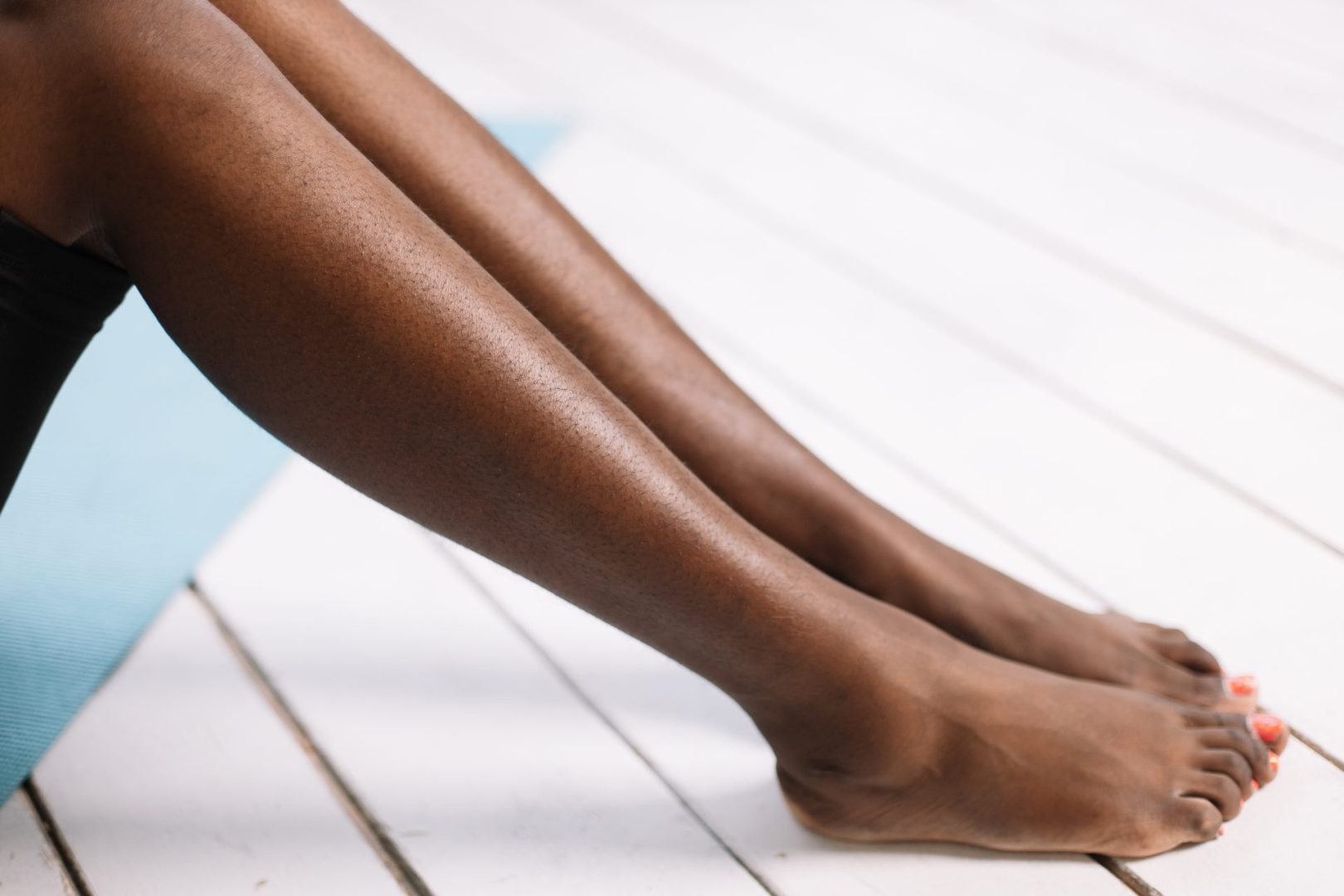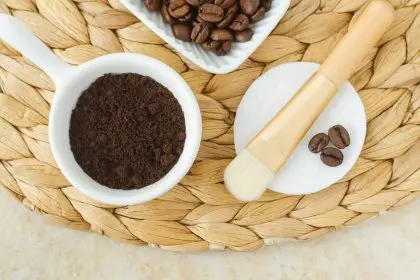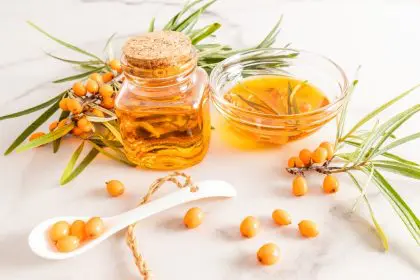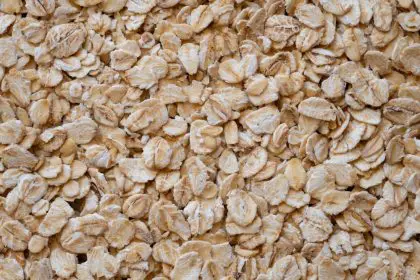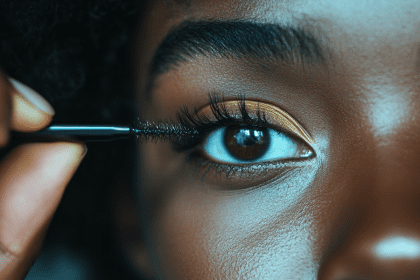The beauty industry generates billions selling solutions for dry skin, yet many people find their skin remains parched despite using expensive products. This persistent dryness often stems from fundamental differences between how commercial moisturizers and natural ingredients interact with skin biology.
Commercial moisturizers typically contain three component types: occlusives that create physical barriers preventing moisture evaporation, humectants that attract water to the skin surface, and emollients that smooth rough texture. While effective in theory, many commercial formulations include problematic ingredients that undermine these benefits through unintended consequences.
Preservatives, fragrances, and stabilizers in commercial products frequently trigger subtle inflammatory responses, particularly in sensitive skin types. This low-grade inflammation compromises the skin barrier function, creating a counterproductive cycle where products temporarily soothe dryness while gradually weakening the skin’s natural moisture retention capabilities.
Many commercial products rely heavily on occlusives like silicones and petroleum derivatives that create immediate smoothness but can trap debris, clog pores, and prevent natural cell turnover. This formula approach prioritizes instant cosmetic improvement rather than addressing underlying barrier dysfunction causing persistent dryness.
Natural ingredients offer a fundamentally different approach by supporting and enhancing the skin’s innate functions rather than temporarily masking symptoms. Plant oils contain lipid profiles remarkably similar to human sebum, allowing them to integrate with and reinforce the skin’s natural moisture barrier. Food-derived vitamins and antioxidants provide building blocks for cellular repair rather than simply coating damage.
Perhaps most importantly, natural moisturizing methods can be precisely customized to individual skin conditions rather than following the one-size-fits-all approach of commercial products. This personalization allows targeting specific causes of dryness—whether environmental, genetic, or lifestyle-related—with tailored solutions impossible in mass-produced formulations.
The kitchen-based approaches outlined below leverage these biological advantages while eliminating potentially problematic synthetic ingredients. When used consistently, these methods often create progressive improvement in skin’s self-moisturizing capabilities rather than the dependency cycle common with commercial products.
Strategy 1: Oil cleansing to preserve natural moisture barriers
Conventional cleansing approaches often exacerbate dry skin by stripping natural oils crucial for moisture retention. Oil cleansing provides a transformative alternative that removes impurities while preserving and enhancing the skin’s protective lipid layer.
This method works through the basic chemical principle that “like dissolves like.” The cleansing oils bind with excess sebum, sunscreen residue, and oil-based makeup while leaving the skin’s essential moisture barrier intact. Unlike conventional cleansers that indiscriminately remove all surface oils, this selective approach preserves necessary hydration.
For optimal results, choose base oils matched to your specific skin condition. Jojoba oil provides ideal balance for most skin types through its remarkable similarity to human sebum, allowing it to regulate oil production rather than simply adding moisture. Grapeseed oil works well for slightly oily but dehydrated skin through its light texture and mild astringent properties. Avocado oil provides intensive nourishment for extremely dry or mature skin through its exceptional penetration and fatty acid content.
The implementation technique significantly impacts effectiveness. Apply 1-2 teaspoons of chosen oil to dry skin, gently massaging with fingertips for 2-3 minutes to dissolve impurities. Remove with a warm, damp microfiber cloth using gentle pressure. The cloth’s texture provides mild exfoliation while the warmth helps the oil penetrate before removal.
For enhanced cleansing without added dryness, create a customized blend with castor oil as a secondary ingredient. Castor oil’s unique composition provides deeper cleansing while other oils ensure moisture balance. Dry skin benefits from a 10% castor oil ratio, while combination skin might use 20%, adjusting based on individual response.
The transformation usually occurs within 7-10 days of consistent use, though initial adjustment periods sometimes include temporary changes in oil production as the skin adapts to this preservation-focused approach. Once stabilized, most users find significantly improved moisture retention even in challenging environments.
Strategy 2: Honey masks for deep hydration and barrier repair
Honey provides exceptional moisturizing benefits through a unique combination of properties unmatched in synthetic ingredients. This kitchen staple delivers multiple skin benefits simultaneously, explaining its effectiveness for even severely dehydrated skin conditions.
As a natural humectant, honey draws moisture from the air into the skin through its hygroscopic properties, creating hydration without heaviness or greasiness. This humectant function works differently from glycerin or hyaluronic acid in commercial products by forming a more breathable layer that allows natural skin functions to continue unimpeded.
Beyond simple moisture attraction, honey contains enzymes that gently dissolve dead skin cells without abrasive action. This natural exfoliation removes moisture-blocking debris while preserving the delicate lipid barrier often damaged by conventional exfoliants. The result provides both immediate smoothness and improved penetration for subsequent moisturizing ingredients.
Perhaps most impressively, honey contains natural antibacterial properties that help resolve low-grade dermatitis often underlying persistent dry patches. Unlike harsh antimicrobial ingredients in commercial products, honey’s activity selectively targets problematic bacteria while supporting beneficial microflora necessary for proper barrier function.
For maximum hydration benefits, raw, unprocessed honey varieties deliver superior results compared to commercial filtered versions. Manuka honey offers particularly powerful properties for severely compromised skin through its enhanced enzymatic activity, though any raw, unheated honey provides excellent benefits.
Application technique significantly impacts effectiveness. Apply a thin layer of slightly warmed honey to clean, damp skin, allowing it to remain for 15-20 minutes before rinsing with lukewarm water. This timing allows optimal enzyme activity and moisture attraction without overcomplicated routines. For intensive treatment of severely dehydrated skin, add 2-3 drops of facial oil to a tablespoon of honey before application.
Consistency proves crucial for transformative results. While single applications provide immediate softness and glow, the progressive barrier repair benefits require regular use—ideally 2-3 times weekly for at least three weeks to see fundamental changes in skin’s moisture-retaining capabilities.
Strategy 3: Avocado treatments for lipid replenishment
Avocado provides unparalleled dry skin benefits through its exceptional lipid profile and nutrient density. This common kitchen ingredient delivers comprehensive moisture restoration particularly valuable for environmentally damaged or mature skin types.
The oil composition in avocados closely resembles human sebum while providing additional therapeutic benefits through its unusually high concentration of monounsaturated fatty acids. These specific lipids penetrate more effectively than many other natural oils, delivering moisture to deeper skin layers rather than merely coating the surface.
Beyond basic moisturization, avocados contain remarkable levels of fat-soluble vitamins E and A that address underlying causes of persistent dryness. Vitamin E provides powerful antioxidant protection against environmental damage that compromises barrier function, while vitamin A derivatives support proper cell turnover and lipid production essential for self-moisturizing capabilities.
The unique combination of oleic acid and plant sterols in avocados helps repair compromised moisture barriers through integration with the skin’s natural intercellular matrix. This repair function explains why avocado treatments often create cumulative improvement rather than just temporary relief common with conventional moisturizers.
For effective home application, the fruit’s preparation significantly impacts results. For daily moisturizing, mash one-quarter of a fully ripened avocado into a smooth paste, applying to cleansed, damp skin with gentle massage until absorbed. This approach provides immediate relief while allowing the skin to absorb only the amount needed without heavy residue.
For intensive treatment of severely dehydrated skin, combine mashed avocado with one teaspoon of honey and optional five drops of olive oil. Apply this mixture as a 15-minute mask before gentle removal with tepid water. This combination provides immediate intensive relief while addressing multiple dryness mechanisms simultaneously.
The transformational benefits typically emerge after 3-4 weeks of consistent use, with many users reporting not just improved moisture but enhanced resilience against environmental challenges previously causing immediate dryness or irritation.
Strategy 4: Yogurt applications for gentle exfoliation and hydration
Plain yogurt offers a multifaceted approach to dry skin through its unique combination of lactic acid, probiotics, and essential fatty acids. This kitchen staple provides gentle correction for multiple conditions underlying persistent dryness.
The lactic acid naturally present in yogurt belongs to the alpha-hydroxy acid family but works more gently than glycolic or other AHAs common in commercial exfoliants. This mild exfoliation dissolves connections between dead skin cells without disrupting the crucial lipid barrier, creating smoother texture while preserving essential moisture protection.
Probiotics in unpasteurized yogurt varieties help restore proper microbiome balance on the skin surface, addressing an often-overlooked factor in chronic dryness. Recent research indicates that proper bacterial balance plays a crucial role in barrier function and moisture retention, explaining why some commercial products fail despite expensive ingredients.
The protein content in yogurt provides immediate surface hydration while supplying amino acids that support the skin’s natural moisturizing factors. These proteins create a lightweight protective film that prevents transepidermal water loss without the heavy occlusive properties that can trigger breakouts in some skin types.
For optimal results, full-fat, plain, unsweetened yogurt varieties provide superior benefits compared to low-fat or flavored options. Greek or strained yogurt offers higher protein concentration particularly beneficial for severe dryness, while traditional unstrained varieties provide higher lactic acid content ideal for combination dry skin with congestion.
Application techniques should vary based on specific skin conditions. For basic moisturizing and mild exfoliation, apply a thin layer of room-temperature yogurt to clean skin, allowing it to remain for 10-15 minutes before rinsing with lukewarm water. This approach provides gentle renewal without potential irritation from longer contact.
For intensive treatments, combine three tablespoons of full-fat yogurt with one teaspoon of honey and optional three drops of preferred facial oil. Apply this mixture as a 20-minute mask twice weekly for accelerated barrier restoration. The synergistic ingredients address multiple dryness factors simultaneously while providing immediate comfort to irritated skin.
Strategy 5: Oatmeal formulations for sensitive skin hydration
Colloidal oatmeal—finely ground oats capable of forming a colloidal suspension in water—provides exceptional benefits for dry, sensitive skin through multiple active compounds unique to this grain. This kitchen ingredient offers profound calming and moisturizing properties particularly valuable for reactive skin types.
The high concentration of beta-glucans in oats creates remarkable moisture-binding capabilities through formation of a breathable protective film on the skin surface. Unlike synthetic film-forming agents, this natural polymer allows normal skin respiration while significantly reducing transepidermal water loss, creating balanced hydration without suffocation.
Avenanthramides, compounds unique to oats, provide potent anti-inflammatory properties that address the irritation cycle often accompanying chronic dryness. These natural compounds inhibit the release of pro-inflammatory cytokines involved in itching and redness, breaking the scratch-irritation-dryness cycle that perpetuates many chronic skin conditions.
The lipid fraction in oats contains ceramides structurally similar to those in human skin, helping restore the intracellular matrix essential for proper barrier function. This restoration capability explains why oatmeal treatments often provide progressive improvement in skin’s self-moisturizing abilities rather than just temporary relief.
For effective home preparation, grind rolled oats (preferably organic) into fine powder using a clean coffee grinder or high-powered blender. The texture should resemble flour for optimal colloidal properties when mixed with liquid. Store in an airtight container for convenience, preparing fresh batches monthly for maximum potency.
For daily moisturizing benefits, combine one tablespoon of colloidal oatmeal with enough warm water to create a milky liquid, applying to cleansed skin with gentle pressing motions rather than rubbing. This approach allows optimal compound absorption while minimizing potential friction irritation on sensitive skin.
For intensive treatment of severely dry, irritated areas, create a paste using colloidal oatmeal and enough warm water to achieve spreadable consistency. Apply to affected areas for 15-20 minutes before rinsing with lukewarm water and immediately applying preferred natural oil while skin remains slightly damp to seal in benefits.
Strategy 6: Aloe vera gel as a moisture-locking humectant
Fresh aloe vera gel provides exceptional moisture-balancing properties through its unique polysaccharide content and complementary active compounds. This easily grown kitchen plant delivers multiple hydration benefits difficult to replicate in formulated products.
The gel contains acemannan and other complex polysaccharides that create powerful humectant properties, drawing moisture into the skin while forming a breathable matrix that prevents evaporation. Unlike synthetic humectants that can potentially draw moisture from deeper skin layers in low-humidity environments, aloe’s complex structure works bidirectionally to maintain optimal hydration balance.
Beyond basic moisture attraction, aloe contains salicylic acid and other natural exfoliating compounds that gently remove dead skin cells without stripping essential oils. This exfoliation happens gradually without the potential irritation of concentrated hydroxy acid products, making it particularly suitable for sensitive skin needing both hydration and renewal.
The zinc content in fresh aloe gel provides additional benefits for compromised skin barriers through its role in cellular repair processes and mild astringent properties. This mineral helps regulate sebum production without suppression, creating balanced moisture even for combination skin types experiencing both dryness and congestion.
For optimal effectiveness, using gel directly from a living plant provides significantly superior benefits compared to commercial aloe products, which often contain minimal actual aloe and numerous preservatives. Growing aloe vera requires minimal care while providing constant access to fresh gel for skincare applications.
To extract gel for skincare use, slice an outer leaf at the base of a mature plant (at least three years old for maximum potency), remove the sharp edges, and fillet off the outer green portion to access the inner clear gel. This fresh gel can be applied directly to the skin or blended with other ingredients for enhanced benefits.
For basic daily moisturizing, apply a thin layer of fresh gel to cleansed, damp skin, allowing it to absorb completely. This application provides optimal hydration balance without stickiness when the correct amount is used. For dehydrated skin requiring additional lipids, follow aloe application with 2-3 drops of jojoba or squalane oil while the gel remains slightly tacky.
For intensive treatment of severely dehydrated skin, blend two tablespoons of fresh aloe gel with one teaspoon of honey and optional three drops of rose hip seed oil. Apply this mixture as a 30-minute hydrating mask twice weekly for comprehensive moisture restoration combining humectant, emollient, and occlusive properties.
Strategy 7: Rice water for brightening and moisture retention
Rice water—the starchy liquid remaining after soaking or cooking rice—offers remarkable skin benefits through its unique composition of minerals, vitamins, and natural compounds. This traditional beauty treatment provides both immediate hydration and cumulative improvement in moisture retention capabilities.
The starch content in rice water creates effective film-forming properties that help prevent transepidermal water loss while allowing normal skin respiration. Unlike synthetic film formers in commercial products, this natural polymer provides protective benefits without potential pore congestion or artificial sensation.
Inositol, a specific compound in rice water, has demonstrated ability to stimulate blood flow and promote cell turnover, addressing the sluggish circulation and renewal often accompanying chronic dry skin conditions. This stimulation helps bring essential nutrients to skin cells while removing accumulated waste products that can impair proper function.
The composition of amino acids in rice protein closely resembles the skin’s natural moisturizing factors, providing building blocks for repair while creating immediate surface hydration. These proteins help restore the skin’s own moisture-binding capabilities rather than simply providing temporary external hydration.
For optimal extraction of beneficial compounds, preparation method significantly impacts efficacy. Cold extraction preserves heat-sensitive components while providing milder astringent properties ideal for sensitive dry skin. Soak half cup of uncooked white rice in two cups of filtered water for 30 minutes, then strain and store the resulting liquid in the refrigerator for up to three days.
Fermented rice water offers enhanced benefits through increased production of organic acids and altered composition of active compounds. To create this variation, follow the cold extraction method but allow the strained liquid to sit at room temperature for 24-48 hours until slightly sour before refrigerating. This fermentation process significantly increases antioxidant activity beneficial for environmentally damaged dry skin.
For daily application, saturate a cotton pad with prepared rice water and apply to cleansed skin as a preparatory toner before moisturizing ingredients. This approach creates an optimal hydrated base layer that enhances the effectiveness of subsequently applied natural oils or moisturizers.
For intensive brightening and hydration, saturate cotton pads with rice water and apply as a 15-minute compress to specific dry or dull areas. This targeted treatment provides concentrated benefits without requiring full-face application, making it practical for busy routines while addressing persistent dry patches.
Strategy 8: Cucumber treatments for cooling hydration
Cucumber provides exceptional benefits for inflamed dry skin through its unique combination of high water content, silica, and natural anti-inflammatory compounds. This readily available kitchen ingredient offers both immediate relief and progressive improvement for reactive dry skin conditions.
The remarkably high water content (approximately 96%) creates immediate hydration through direct moisture infusion rather than just humectant attraction. This direct water delivery helps quickly rehydrate parched skin cells while providing a vehicle for the cucumber’s other beneficial compounds to penetrate effectively.
Silica, abundantly present in cucumber peel and flesh, supports collagen structure essential for proper moisture retention. This mineral helps maintain skin’s architectural integrity that allows optimal barrier function, addressing a common underlying factor in persistent dryness resistant to surface treatments alone.
Caffeic acid and ascorbic acid in cucumbers provide natural anti-inflammatory benefits that help calm the irritation cycle often accompanying dry skin conditions. These compounds reduce redness and reactivity while supporting the skin’s natural repair processes often impaired by chronic inflammation.
The cooling properties of fresh cucumber provide immediate comfort to tight, irritated dry skin through mild vasoconstriction that reduces heat and redness. This temperature reduction helps break the itch-inflammation cycle that often perpetuates chronic dryness, particularly in reactive skin types.
For optimal extraction of beneficial compounds, mechanical disruption of the cellular structure significantly improves efficacy. Rather than simply slicing cucumber, blend or finely grate the flesh to release intracellular components before application. This preparation ensures maximum availability of both water-soluble and lipid-soluble beneficial compounds.
For basic hydrating treatment, blend half a medium cucumber (including peel if organic) until smooth, strain through fine mesh or cheesecloth to remove solids, and apply the resulting liquid directly to cleansed skin. This pure cucumber water provides immediate cooling relief while delivering silica and natural anti-inflammatory compounds without added ingredients that might cause sensitivity.
For enhanced overnight hydration, blend one-third cucumber with one tablespoon plain yogurt until completely smooth. Apply this mixture as a thin layer before bed, allowing it to remain overnight. The cucumber provides immediate hydration and anti-inflammatory benefits while the yogurt’s lactic acid gently exfoliates and its protein content helps lock in moisture during sleep.
Strategy 9: Banana masks for intensive repair of severely dry skin
Banana provides exceptional benefits for severely dehydrated skin through its unique combination of potassium, B vitamins, and natural oils. This common fruit delivers comprehensive skin barrier support particularly valuable for addressing long-standing dry skin conditions.
The remarkably high potassium content helps balance the skin’s electrolyte levels essential for proper cellular hydration. This mineral plays a crucial role in regulating fluid balance within skin cells, addressing the dehydration that often persists despite external moisturizer application.
Vitamin B6 and other B vitamins in bananas support the skin’s natural production of ceramides—specialized lipids that form the crucial waterproof barrier preventing moisture evaporation. These vitamins serve as cofactors in the biochemical pathways producing these essential barrier components, addressing a root cause of chronic dryness.
Lectin, a specific protein in bananas, helps protect the skin from environmental irritants through mild barrier-enhancing properties. This protection allows damaged skin barriers time to repair naturally without continuous assault from external aggressors that perpetuate the dryness cycle.
Natural oils in ripe bananas provide intensive emollient properties that immediately smooth rough texture while supporting longer-term barrier repair. These plant lipids integrate effectively with the skin’s own intercellular matrix due to their biological compatibility, creating more lasting improvement than synthetic emollients.
For optimal extraction of beneficial compounds, banana ripeness significantly impacts efficacy. Fully ripened bananas with light brown spots offer maximum conversion of starches to simpler sugars with enhanced moisturizing capability, while providing higher levels of antioxidants beneficial for barrier repair.
For basic hydrating treatment, mash one-half fully ripened banana until completely smooth, apply to cleansed skin, and allow to remain for 15 minutes before rinsing with lukewarm water. This simple application provides comprehensive moisture benefits while allowing busy individuals to incorporate treatment into regular routines without complicated preparation.
For intensive overnight repair, combine one-half mashed banana with one teaspoon honey and optional three drops of olive or avocado oil. Apply a thin layer to particularly dry areas, allowing it to absorb substantially before sleeping. This treatment leverages sleep’s natural repair cycle to maximize beneficial compound utilization while providing the extended contact time necessary for severe dryness improvement.
Strategy 10: Overnight oil treatments for transformative results
Strategic overnight application of specific plant oils provides transformative benefits for chronically dry skin through extended contact with biomimetic lipids unavailable in conventional moisturizers. This overnight approach leverages the skin’s natural nocturnal repair cycle for enhanced barrier restoration.
The effectiveness stems from selecting oils with molecular structures compatible with human skin lipids, allowing integration with and repair of the intercellular matrix rather than merely coating the surface. This integration ability explains why certain plant oils create fundamental improvements in barrier function while others provide only temporary surface relief.
Jojoba oil offers exceptional overnight benefits through its remarkable similarity to human sebum, containing unique wax esters that regulate the skin’s own oil production rather than simply adding moisture. This regulatory function makes it particularly valuable for combination dry skin that experiences both flaking and occasional congestion.
Rosehip seed oil provides intensive repair capabilities through its high concentration of essential fatty acids and natural retinoic acid compounds. These components support cellular renewal and proper barrier formation while addressing the structural changes in aging skin that often contribute to increasing dryness.
Argan oil delivers comprehensive barrier support through its balanced profile of oleic and linoleic acids combined with exceptional vitamin E content. This combination both repairs existing barrier damage and provides protection against oxidative stress that progressively degrades barrier function over time.
Squalane (plant-derived) offers perhaps the most biomimetic option through its identical structure to human squalene, a major component of sebum that declines significantly with age. This perfect structural match explains its exceptional absorption and effectiveness for severely dehydrated mature skin.
Application technique significantly impacts overnight treatment efficacy. Rather than applying excessive amounts that remain on the surface, use 3-5 drops warmed between palms and press gently into slightly damp skin. This minimal quantity with proper application ensures optimal absorption without pillow transfer or potential pore congestion.
For enhanced penetration of beneficial compounds, apply chosen oil after using a humectant layer like aloe vera gel or a hydrosol facial mist. This moisture layer creates optimal conditions for oil penetration while providing complementary hydration through different mechanisms for comprehensive overnight treatment.
Creating a customized natural moisturizing routine
Effective natural moisture management requires strategic combination of these approaches based on individual skin conditions and root causes of dryness. This personalized system typically combines daily maintenance, intensive treatments, and environmental strategies for comprehensive results.
Begin by identifying specific dryness patterns through careful observation. Note whether dryness appears consistently or fluctuates with seasons, hormonal cycles, or stress levels. Observe exactly where dryness manifests most severely—entire face, specific regions, or isolated patches. This mapping helps target interventions precisely rather than applying generalized approaches.
Develop a daily foundation routine incorporating gentler versions of these strategies for consistent maintenance. This typically includes oil cleansing with appropriate oils for your skin type, hydrating ingredients like aloe or cucumber water, and suitable plant oils applied to damp skin. This daily foundation prevents moisture depletion while supporting progressive barrier improvement.
Implement targeted intensive treatments based on specific needs indicated by observation. Severely dehydrated areas might receive banana-honey masks twice weekly, while sensitive regions benefit from regular oatmeal treatments. This targeted approach addresses multiple dryness causes simultaneously without overwhelming skin with excessive interventions.
Consider internal hydration strategies complementing topical approaches. Adequate water consumption provides the fundamental moisture necessary for skin hydration, while omega-3 fatty acids from sources like flaxseed, chia, or walnuts support proper barrier function from within. This internal-external combination creates comprehensive moisture management impossible through topical treatment alone.
Monitor environmental factors significantly impacting skin hydration. Indoor heating, air conditioning, and certain climates dramatically increase moisture evaporation from skin. Address these factors through appropriate humidification, protective natural oil application before environmental exposure, and strategic rehydration throughout the day during particularly challenging conditions.
Adjust intervention intensity seasonally rather than maintaining identical routines year-round. Most skin requires significantly different moisture support during winter heating season versus humid summer months. This seasonal adaptation prevents both under-moisturizing during harsh conditions and potential over-moisturizing during naturally humid periods.
Through consistent application of these natural approaches, most people experience fundamental transformation in skin’s moisture-retention capabilities rather than just temporary surface relief. This improvement typically manifests as decreased dependence on moisturizing products, enhanced resilience to environmental challenges, and progressive resolution of chronic dry patches previously resistant to commercial treatments.

